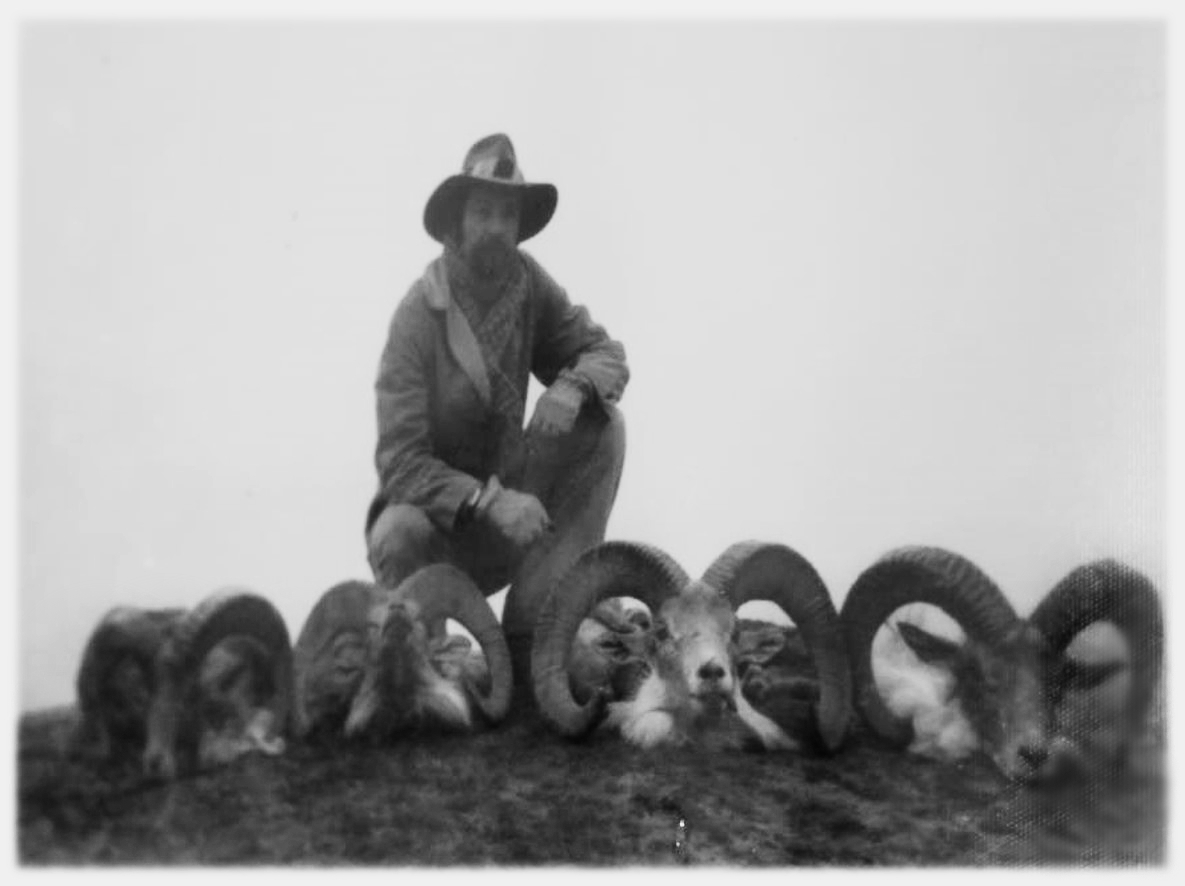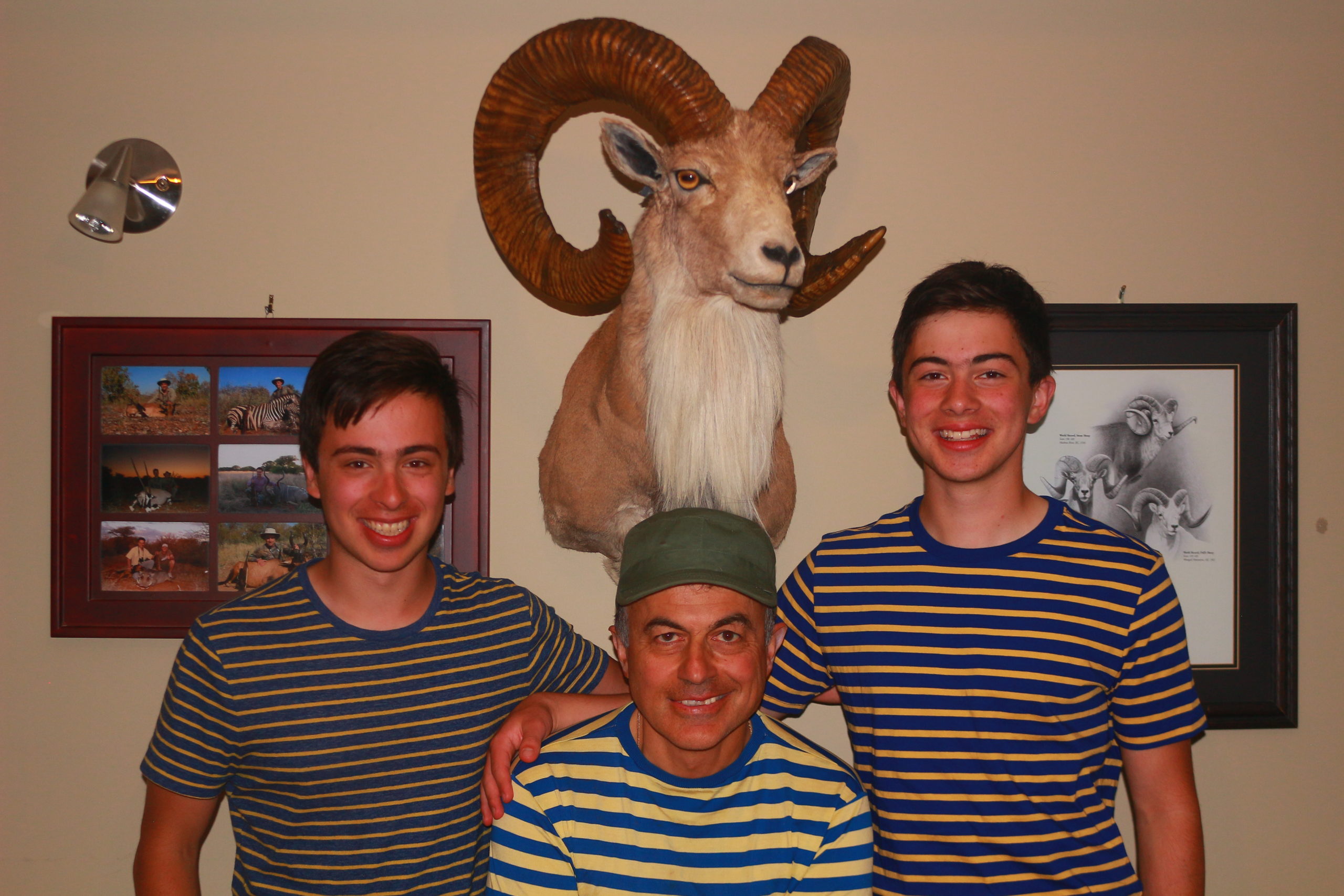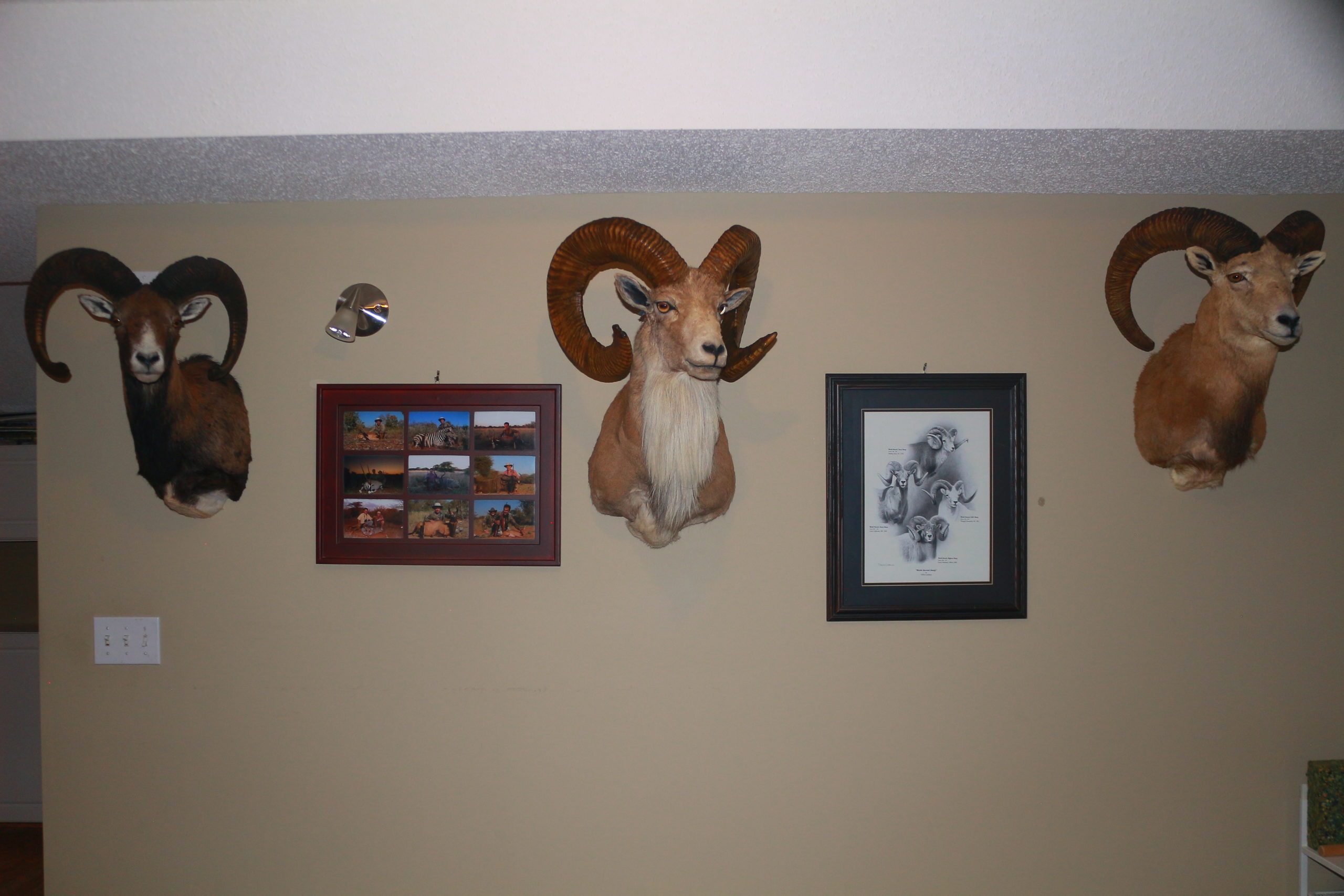The story of a magnificent Transcaspian Urial ram, which despite many twists and turns, finally came home after 50 years in exile!
After spending lifetimes chasing mountain game, sheep hunters soon discover that even without mistakes, stalks and plans often get busted, and the quarry leaves the country at once. However, they also learn that as a mountain hunter, you never give up!
The story I am about to recount goes back 50 years and entails the taking of a magnificent Transcaspian Urial (TCU) ram by my late father in the Bojnurd area of northeastern Iran. I was too young, at nine years old, to tag along. Several years after he had passed, my uncle told me the story in full while my cousin recorded it. A few years later, my uncle also met his creator (2003), joining my dad in sheep/ibex/chukar heaven.
Knowing how beautiful this ram was and the story behind it haunted me for decades, calling to me to extract that head out of Iran and into my Canadian collection as a memento from my old man. As we all know, totalitarian regimes don’t operate on logic or rules, and the current regime in Iran is no exception. More on that later, but first, the story of the hunt.

The only picture from that unforgettable hunt with my adopted Uncle Nouri in front of the four superb trophy quality TCU rams!
It was mid-October of 1970 when my dad, my uncles, and one of their friends packed up the old Land Rover with provisions and headed for a three-day sheep hunt near Bojnurd. On day 2, as they split up into two groups, they left camp in the early morning hours. They hiked to an elevated spot in the undulating terrain where they paused on a rock outcropping to have a rest. They tied their pack mule to a tree and started glassing. Using mules in Iran is very customary, and generally, your “Shikari” (guide) brings his own so that he can haul supplies for the day and have the means to carry the quarry back if you connect.
The rut for this magnificent Old World sheep does not arrive until December. In October, rams are always separated from ewes and lambs, but as my uncle correctly pointed out in the story: “they are always in the vicinity of the ewes just in case a younger ram gets creative.” These sheep have been hunted for at least 3,000 years, as indicated in the historic art preserved in London’s British museum depicting hunting during the Achaemenid dynasty. These TCU are extremely reserved, and unlike our North American sheep’s habits of spooking, then stopping to look back after a few hundred yards, these long-legged Moufloniforms with their grandpa like bibs and beards, will run for several kilometers before settling down.
As they glassed the hillsides with their old 7-power roof-prism binoculars, two ewes and three lambs showed up on the skyline. They were unaware of the hunting party and started feeding towards them. The hunting party stayed put to see what would happen. Suddenly, two gorgeous rams also appeared on the skyline and followed the ewe’s trail. They were not spooked, but their body language showed that they were up to something. At this point, they were roughly 700 yards away. One of the rams was an old mature ram with lighter horns that my uncle described as “Marble Horned,” — a perfect TCU trophy. My dad turned to my uncle and said, “Bro, what is going on? Shouldn’t the rams be in separate basins from the ewes this time of year? How come they are following the ewes? Not five minutes passed when, out of nowhere, the head of a shepherd riding his donkey appeared on the horizon upwind of the sheep, which explained why these sheep had left their feeding areas. Just then, the rams changed direction quickly and took a sharp turn away from the ewes and lambs to get away. Watching the story unfold, my dad and uncle realized an opportunity for a long shot and got set up. My dad laid the stock of his Belgian-made .270 on a folded wool mat and settled behind the scope, as did my uncle. They estimated the distance to be around 400 yards. As the “Marbled Horned” ram hopped on a big rock and turned his head 180 degrees to look for the other trailing ram, my dad touched off a shot. Dad knew the trajectory of the 130 grain Silvertip following the crosshairs just above the rams back, and the ram collapsed on the rock where he stood. My uncle followed suit on the second ram, and in no time, both rams were down. The jubilation and the hug-exchange take place, and they were both amazed at the successful long shots. Then they walked up to the sheep, gutted them, and packed them onto the back of the mule to haul back to camp.

The museum where the “Marbled Horned” ram was stored all these years.
Many other side stories –some for humor and some for fact telling–accompany the ram story by my uncle in the recording, which I will save for another time. When they arrived at camp near dusk, they found that the other two hunters, including my adopted uncle Nouri, had also connected with big rams. They exchanged stories, made shashliks out of the rams back straps, and celebrated their success with their favorite 90-proof Vodka, called “Aragh” in the Farsi language. The laughter and the BS session extended well into the night.
For years that followed — until 1979 when the clergies ousted the former Shah of Iran — the “Marble Horned” ram’s shoulder mount hung next to many heads of Ibex, Maral and Gazelle decorating the walls of our beautiful family villa on the Caspian coast. After the revolution, with my dad and uncle outside the country, their taxidermist friend who had stayed in Iran decided to store these trophies away from all harm in a museum belonging to a hunter.
Over the subsequent thirty-five years, I had often thought about and relived Pop’s ram story in my head but could never imagine being able to see that trophy again, let alone bring it out of Iran. Yet, on a cold December night in 2015, I received an email from Mr. Tehrani, the owner of a museum in Iran. I didn’t know who he was or what his thinking might be, thus, receiving his email made me skeptical of his intentions. However, after introducing himself, he told me that he had heard the story of this ram and that he now understood how much it meant to me. He reassured me that the ram was safe and sound in his museum and if I was able to write him a note and provide him the cape of a caribou for his museum, he may be able to convince the authorities to issue a CITES permit for this ram to be shipped out of the country. I was sleepless that cold December night, thinking that there was even a sliver of hope that I would see that ram again.
Nothing happened for four more years until one day, Mr. Tehrani sent me a new message through WhatsApp and asked me for a $600 fee that he says the government required to issue the CITES permit. Without hesitation, I sent him the money, and on December 24, 2019, I got another WhatsApp message from him with a copy of the CITES export permit. In other words, the best Christmas gift from a long-deceased father that a sheep hunter could imagine. I woke up several times that night and looked at my phone to make sure I was not dreaming.

Three generations of sheep hunters in one spirit.
Also, since I knew that this day would possibly come, I had already contacted the Canadian CITES office to prepare the Import paperwork. I was told that the Import permit could not be issued until the export permit was ready. On December 26th, I e-mailed my export CITES permit to Ottawa and made a follow-up phone call to make sure it was received and to find out how long the import permit processing would take. Incidentally, that same day I got an email from the officer in Ottawa who was assigned to my case. The officer informed me that because of recent re-classifications, the TCU is now cited under Appendix II, which means it does NOT require an import permit from Canada. What a hoot that is, eh?
Parallel to these events, I suddenly remembered that one of my coworkers had gone to Iran to visit her ailing grandma for Christmas and that she was coming back to Canada on January 5th, 2020. I immediately contacted her through WhatsApp and inquired about the possibility of bringing this ram out of the country. This would only work if she checked her luggage in Tehran all the way to Calgary with no need to declare it in Frankfurt in transit. She deliberated, and my heart sank to levels I don’t recall in recent memory. She accepted, though, and I was simultaneously awestruck and grateful.
On January 5th, in the early morning hours, a new WhatsApp message arrived from my co-worker saying that my trophy had made it to the cargo of their Lufthansa Airbus A320 and was on its way to Canada. This news sent my mood through the stratosphere in a fairy tale of elation that I still cannot believe was real. Several hours later, I met her at the Calgary airport. With eternal gratitude and appreciation, I received my well-wrapped box containing a dream I had cherished for over five decades. The ram came home with me, and after hanging it on the wall, we all opened a bottle of aged Port to toast his arrival and had a toast to my late dad and uncle, whom I am sure had something to do with this miraculous homecoming.
Two days later, on January 8th, the news reported the devastating story of the Ukrainian airliner shot down by the Iranian regime, and all borders were shut down. In just two days, the fate of this story would have been very different. I should emphasize that the incident moved me tremendously — I would gladly have accepted not seeing the ram ever again if the lives of those 176 victims could have been spared. What a tragedy!

Moufloniform Trio
In closing, I would like to thank those that watched over this sheep, both living and dead, for this gift and I hope to leave it as an heirloom legacy for my sons, who just like their dad, will never likely be able to hunt sheep in the land of the lion and the sun. However, they can be proud to know what their grandpa did and can, in turn, share this story down to the 5th generation with their children.
Amen

